Improvement Insights Blog
Old Habits are Hard to Break
I learned how to type on a manual typewriter 50 years ago. I still type the same way. Old habits are hard to break. Here’s why:
“Hi, I’m Jay Arthur, author of “Lean Six Sigma Demystified” and QI Macros [software].
“Back when I was a teenager, my mother was convinced that I needed to learn how to type and so I took a summer typing course at the high school. We had those old Remington manual typewriters, right? We had to whack the key to make it fly up there and hit that ribbon hard enough that you would make a decent impression on the paper. That’s how I learned how to type. Now my wife, on the other hand, learned on a Selectric [electric typewriter] and she’s a very good touch typist, but I am still (even with my computer keyboard) still hitting it like I had to make the keys go up to the [paper].
“This is the terrible thing about a habit: Once you learn it, it is difficult to transition to a smarter way of doing things. This is why Quality Improvement is so hard. People are used to doing things a certain way and those things are hardwired in the brain. They just want to go do them the way they’ve always done them, which makes it very difficult to get enough repetitions so that they actually change.
“We had to work on our service reps [at the phone company] at one time because they were all saying, “We can have your service restored four days from now, that’ll be Thursday.” Well, we were trying to change it so that they would say, “When would you like your service restored?” The truth is, nobody ever wanted their telephone service to go out, right? They wanted it restored yesterday, but we were going to try and see if we could do that. But to get the service reps to learn how to do that, we had to do some very elaborate things.
“We put little footprints on the floor, got them to a certain point, and then they had to shift over and then go do the new process. Do it slowly multiple times until they actually could do it repeatedly, and then we put them back online to actually go do that and it was still difficult for them.
“So just because you’ve come up with a great improvement, even if your team generated that improvement themselves, they’re going to have a hard time sticking to it because of habit… plain old hard wired habit. Don’t pretend that just because you have a great improvement it’s going to stick. It won’t; it’ll slide. You need control charts and things to hold it in place, to keep it where it is, and then push it up even higher to better performance.
“That’s my Improvement Insight. Let’s go out and improve something this week, and let’s make sure it sticks, in spite of everyone’s habits.”


